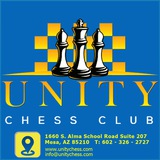The difficulty here is maybe that, when conducting an attack on the king, you are disinclined to opt for an exchange of queens. Yet in this case, Black's attack continues with great force. The pawn on g2 is deprived of a defender and ... h4-h3 is a nasty threat.
Unity Chess Club
Here White continued with 12.Ng5. What would be his idea and should it work out?
Yury Shulman-Mackenzie Molner
Wheeling 2014
Wheeling 2014
Now if White had some time to arrange his pieces he would have a good case against the isolated doubled c-pawns. As it is, however, Black is easily quick enough to resolve matters and exchange the weak pawns, while preserving his pair of bishops.
Black decides to transfer the king to the other wing because it will not be safe on the kingside. In fact, he should have started preparations for this on the previous move, when he retreated his knight from d7 to b8.
Immediately switching his attention to the queenside, trying to open up lines there.
